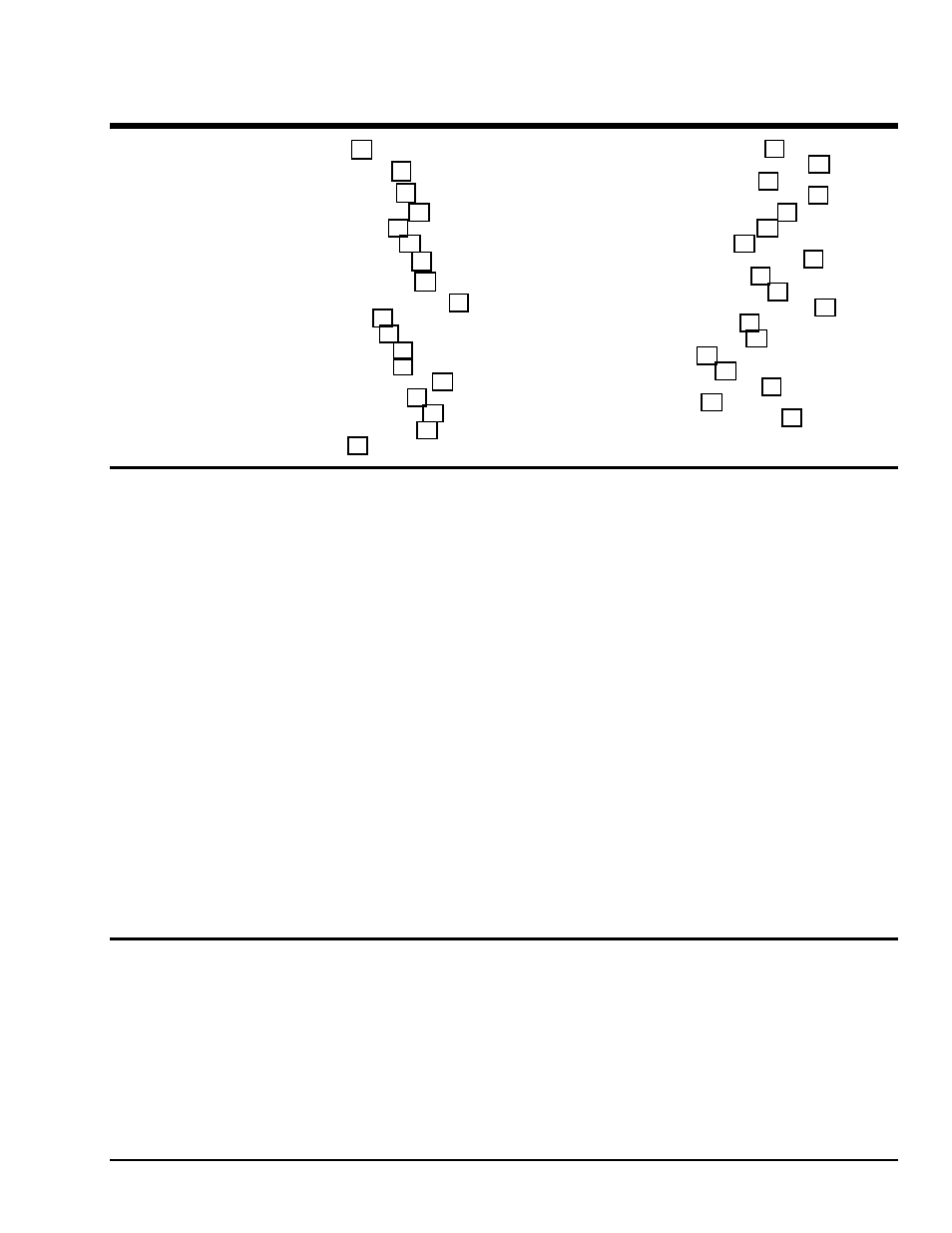Chapter 7 - dac488 commands, Introduction, Command syntax – Measurement Computing DAC488 v.1 User Manual
Page 57: Tion…… 51, Dac488 commands 7

DAC488 User’s Manual
DAC488 Commands 51
DAC488 Commands
7
Introduction…… 51
Command Syntax…… 51
Command Groups…… 53
System Commands…… 53
Port Commands…… 53
Command Support……53
Command Summary…… 54
Command Reference…… 57
@ - Trigger On Command…… 58
A - Autorange…… 59
B - Buffer Data…… 60
C - Control Mode…… 61
D - Digital Output…… 63
E? - Query Error Status…… 64
F - Buffer Definition…… 66
G - GET Trigger Mask…… 67
H - Offset Calibration…… 68
I - Interval…… 69
J - Gain Calibration…… 70
K - End-Or-Identify Control…… 71
L - Buffer Location…… 72
M - Service Request Mask…… 73
N - Number of Cycles…… 74
O - Output Format…… 75
P - Port Select…… 76
Q - External Trigger Mask…… 77
R - Range Select…… 78
S - System Defaults…… 79
T - Command Trigger Mask…… 80
U - User Status…… 81
V - Value Output…… 84
W - Test…… 85
X - Execute…… 86
Y - Bus Terminator…… 87
? - Query…… 88
Serial Poll Status Byte…… 89
Introduction
Control of the DAC488 is implemented with 26 commands, described here in detail. Examples are given
for the commands using a PC functioning as an IEEE 488 controller by using the Personal488 PC/IEEE 488
board and associated Driver488 software. All examples are given using GW-BASIC or BASICA.
Commands may be given using upper or lower case letters. The DAC488 bus address should be set to 9 for
all examples.
In order to establish communication with Driver488 from GW-BASIC or BASICA, the following sequence
must be used:
OPEN "\DEV\IEEEOUT" FOR OUTPUT AS #1
IOCTL#1,"BREAK"
PRINT#1,"RESET"
OPEN "\DEV\IEEEIN" FOR INPUT AS #2
All of the command examples that follow assume that the driver has been properly opened and reset by the
above sequence.
Most of the instructions offer a Query (
?
) command extension. This extension can be used to determine the
present configuration or mode of a command previously executed. Any number of these Query commands
may be combined into one string to allow the user to construct a specialized status command requesting the
DAC488 to return only that information which is of interest for a given application.
Note:
It is necessary that the Execute command (X) follow all command strings sent to the DAC488. No
commands are executed until an X is received by the DAC488. The only exceptions to this rule
are the Query (?) commands and the CommandTrigger (@), which do not have to be followed by
an X.
Command Syntax
Operation of the DAC488 is accomplished using a set of commands that configure the entire interface and
commands that configure each DAC port. The syntax rules for using the commands are listed below.